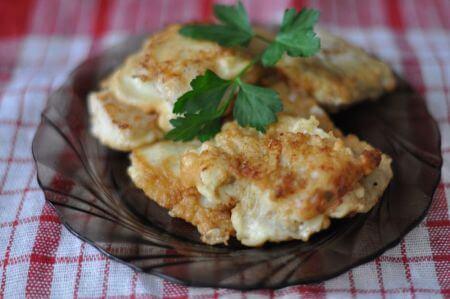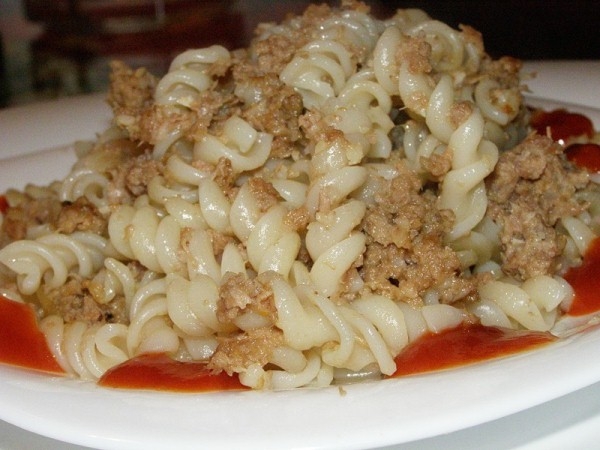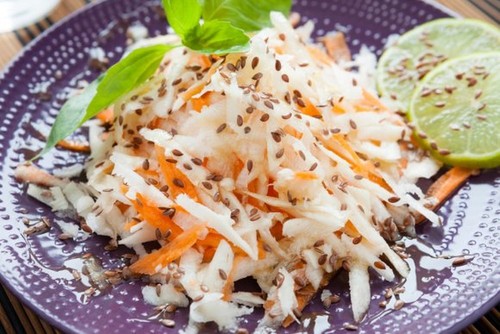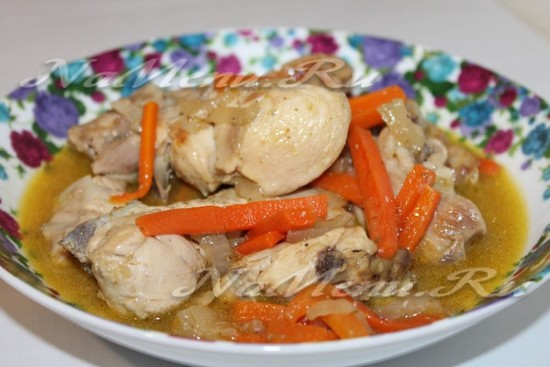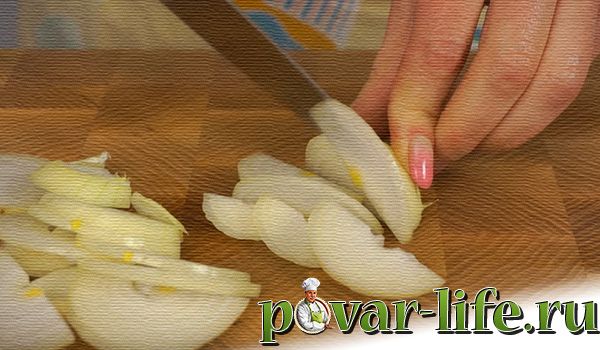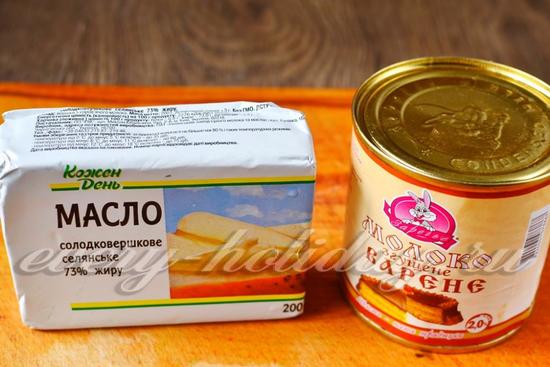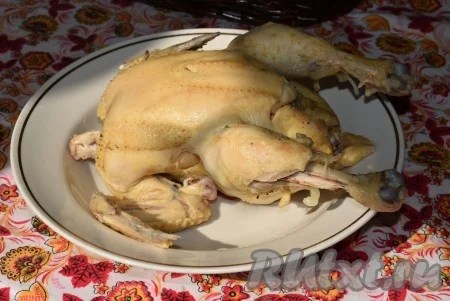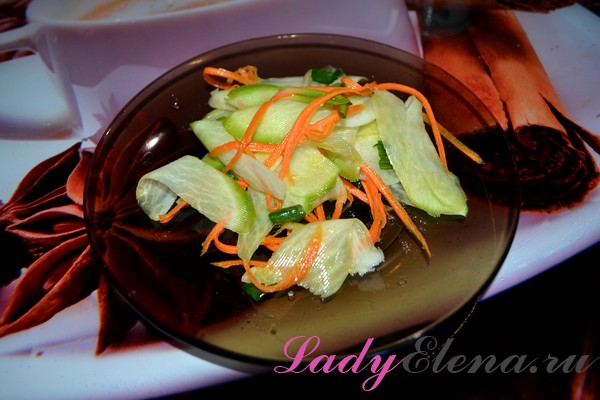Cucumbers on a 2 x jar. Salting big cucumbers
Finally, in the Urals, we waited for the established heat and all cultures went into growth and began to bear fruit actively. We already lowered stewed gooseberries and redcurrant jelly into the basement. And now there are plenty of cucumbers, too, so it's time to clean them too. In winter, I most often use them in and.
Well, now we are worried about pickling cucumbers for the winter in liter jars, so much so that they turn out crispy. If you are interested in why I focus on this particular volume, I will gladly explain. The fact is that we do not eat three-liter and a couple of fruits still sour and disappear in it. And remembering the recipe for 1 liter, you can safely calculate the right amount of ingredients for two and 3 liter jars.
Of course, I will not cover all the recipes, but I will show you the most interesting and successful in composition.
By the way, if you are interested in different marinades, then this topic is dedicated.
Salting crispy cucumbers in liter jars for the winter with lemon (citric acid)
Let's start with the most unusual way of salting. I really liked the originality and aroma. And the whole thing is that in each jar a circle of lemon is added. And it helps our preparations not to explode and not to sour. Of course, for a complete preservation, 1 slice is clearly not enough, so we will add a little lemon.

For a liter we take:
- water - 0.5 l;
- salt - 25 g;
- sugar - 70 g;
- citric acid - 0.5 tsp
- garlic - 2 prongs,
- lavrushka - 2 leaves,
- currant - 2 leaves,
- horseradish root - 0.5 cm
- dill umbrella
- allspice - 2 peas,
- tarragon - 1 leaflet
- cherry - 2 leaves.
1. The highlight of crispy cucumbers is that they need to be pre-soaked. If you have them yesterday, then fill them with water for 2 hours. If the crop is fresh, then for 30 minutes. So they will completely replenish the evaporated moisture and remain full and elastic.
2. Then you need to take a clean foam sponge for washing dishes and thoroughly rinse each cucumber with it. If you have a prickly variety, then you must also get rid of these small growths.
3. Then, at each vegetable, we trim the tails on both sides.
4. At the bottom of a clean container we put 2 cloves of garlic, leaves of cherry and currant, dill and peppercorns. Add vegetables, you need to do this very tightly. Usually take small or medium fruits. The middle ones are laid out the first row vertically so that the cucumbers stand.

And the top of the can is already filled with small fruits, they are easily placed at the neck. To prevent the workpiece from exploding, its filling must be warmed up.
5. Wash the lemon and cut into rings. One piece is added to each liter. Pour them with boiling water and leave to warm.

To prevent the jar from cracking, place it on the blade of the knife so that excessive heat is expelled into it.
6. After 20 minutes, drain this water. Then we drain this water.
7. During the time that we filled the cucumbers, we will have time to prepare the marinade.
Sugar, salt and citric acid are poured onto 0.5 l of water. We put the container with the brine on the stove and turn on a moderate fire.
8. After boiling, cook the marinade for 1 minute. Drain the water from the cans and fill the brine. Without wasting time, we immediately roll up the necks with boiled and dried lids.

9. The next step is to carefully turn our liter over and check if air bubbles go inside the pickle and if the lid is leaking somewhere.
10. We hide our blank “under the fur coat”, there it will continue to be sterilized naturally.
By the way, in this recipe you can add tomatoes, peppers or other vegetables. The cooking method will not change, but the marinade ratio remains the same.
With 1 liter of brine, you can pour two liter jars.
Detailed step by step recipe with 9% vinegar
In our country, marinades with vinegar are more successful than without it. Therefore, of course, the recipe with its application I will not pass by.

Composition per liter of cucumbers:
- salt - 2 tbsp.,
- granulated sugar - 1 tablespoon,
- allspice - 2-3 peas,
- 30 g of vinegar 9%
- dill umbrella
- 2 garlic cloves.
We will also cook without sterilization, it is much faster, and the result also turns out to be tasty.
1. We prepare cans. I usually do this with steam, and the lids are boiling in a bucket.
2. At the bottom of sterile liters we put the cloves of garlic and dill.
3. The next steps to the jar are clean and dry cucumbers. They also cut 2 millimeters from the ends.
4. Then we need to warm the vegetables twice. But to keep them crispy, we will reduce the time of scalding them.
If earlier we heated them for 20 minutes, now we will do it for 10 minutes each time.
5. Fill the container with boiling water and cover with a lid. We notice the necessary 10 minutes.
6. Then we pour this water into the pan and once again warm the fruits with boiling water.
7. In this ten minutes we will prepare the brine. Pour sugar and salt into a liter of water, put the brine on the fire and let it boil.
8. Drain the water that we poured a second time. And then lay peas of pepper in the cucumbers themselves. Fill with brine not to the edge, leave a little space to pour vinegar.
9. Close with sterilized caps and lock with a key.
10. Turn them over and cover them "under the fur coat", where they will stand for at least another 12 hours.
Salted cucumbers for the winter on mineral water
We make salted cucumbers in order to immediately eat them. But there are lovers to close them for the winter. Therefore, I also bring this recipe, but I remind you that they need to be stored only in the cold.

Composition per 1 kg of cucumbers:
- 2 tbsp salt without a slide,
- mineral water - 1 liter,
- 2-3 dill umbrellas,
- Garlic Slices - 2 pcs.
1. Rinse the fruits and cut off their tips.
2. We put dill umbrellas, garlic and vegetables in a jar.
3. Mix mineral water with salt and pour cucumbers to the top. Close the capron lid and leave to stand at room temperature for 3 hours. Then we put them in the refrigerator.
They are lightly salted and crunchy. They are stored almost until spring. But still I advise them to eat before the rest.
The method of pickling cucumbers without sterilization with 70% vinegar
With vinegar essence it is very easy to overdo it and then the pickling will turn out very sharp. I usually use 1 teaspoon of acid without top for 1 liter of water.

Ingredients for two cans, 1 liter in volume:
- 1 kg of cucumbers,
- 1 bell pepper
- 2 dill umbrellas
- 5 cloves of garlic,
- 4 peas of allspice,
- 9 peas of black pepper,
- 2 leaves of parsley,
- 1 tsp vinegar essence (70%),
- 1 liter of water
- 1 tbsp rock salt
- 2.5 tbsp granulated sugar.
1. Well, wash the fruits of white plaque under running water with a clean new sponge. Then soak with water for 1.2 hours.
2. We wash the jars with baking soda and sterilize them and the lids.
3. In a deep cup, place the bay leaf and dill umbrellas. Pour boiling water for 1 minute. So they better give their flavor.

4. Remove the seeds and the stalk from the bell pepper and cut the flesh into small pieces. We put them in a jar. On them is a bay leaf, an umbrella of dill, garlic and peas of black pepper.

5. At the fruit we cut off the buttocks and put them tightly in jars.

A volume of 1 liter takes about 500 g of cucumbers.
6. Pour boiling water to the top and leave for 10 minutes to warm the vegetables.

7. Then we drain this liquid. We boil it again and again pour the fruits for 10 minutes.

8. During this time we will have time to make a marinade. Put salt and sugar on 1 liter, let the water boil.
9. Drain the liquid from the workpieces and immediately fill them with hot brine.

10. Top with brine in each billet add 0.5 tsp. vinegar essence and close the banks with a key.
Turn over and remove “under the fur coat”.
Mustard marinating method
Mustard gives a ready-made pickle a specific pungent flavor. And the cucumbers themselves are becoming sweeter. By the way, when adding vinegar, they retain their green color, but when adding vinegar, they seem to turn a little yellow. Have you noticed?

We will need:
- cucumbers
- 2 leaves of cherry
- 2 leaves of currant,
- 1 bay leaf
- 3 little peppers
- 5 peas of black pepper
- 1 carnation inflorescence,
- 1 tsp mustard seeds or 1 tablespoon dry,
- 1 tsp vinegar 70%
- middle horseradish stalk,
- granulated sugar - 2 tbsp.,
- rock salt - 2 tbsp.
1. We wash the vegetables, sort by size and fill with water for 2 hours.

2. Then we cut off the tops of each fetus. If there are bitter, it’s not scary, the marinade will well salt them.
3. Scalp and currant leaves are scalded with boiling water. A pleasant aroma will immediately go through the kitchen.

4. At the bottom of the sterile liter we put 2 sheets of cherries and currants, a bay leaf, allspice and black pepper.

5. Tamp the cucumbers and pour boiling water over them for the first time so that they warm well.

6. Then we pour this liquid into the pan, let it boil and fill it with jars again, cover the necks with lids so that the water does not cool quickly.
7. Cooking the marinade. Pour sugar and salt per 1 liter of water, put on a stove and let the brine boil.
8. In the meantime, pour water from the cans and add a teaspoon of mustard to each liter. You can use the seeds, then they will be beautifully distributed in the marinade, or take a dry seasoning, but the color of the brine may become slightly cloudy. This will not affect the taste.

9. Pour boiling marinade, then pour into the blanks on an incomplete teaspoon of vinegar essence.

10. Roll up the containers and turn them upside down. If not a drop has leaked anywhere, then we cover it with fur coats until it cools completely. And it will take about a day.
The recipe for preservation without vinegar with aspirin
Now it has become possible to use aspirin. This is acetylsalicylic acid, which, like citric and malic, helps our preparations to successfully survive the winter in the cellar.

But still, it can cause allergies, so it is not suitable for all families.
Composition:
- 16 ml of 9% vinegar,
- 1.5 tbsp granulated sugar
- aspirin - 1 tablet,
- 1.5 tbsp salt
- garlic cloves - 2 pcs.,
- dill,
- horseradish leaf
- 1 liter sterilized container
- 3 sheets of cherries and currants,
- allspice - 4 peas.
1. In a sterile liter we spread seasonings: garlic, herbs, leaves and pepper.
2. The fruits are washed, dried and cut off the butt.
3. In the teapot we heat the water and pour cucumbers with boiling water to the very top. We cover with a sterile lid and let cool until you can grasp the sides of the can.
4. Vegetables warmed up and pour this liquid into the pan. We add vinegar, salt and sugar to it.
5. We wait until the brine boils, and put 1 aspirin tablet in the jar itself.
6. Top with boiling brine and do not hesitate, but immediately roll up the lids.

7. Wrap up the workpiece and wait for complete cooling.
Video recipe for salting for the winter with vodka
It turns out that the marinade with vodka also gives crispiness to cucumbers. I think it will be more interesting for you to watch a video where each step of salting is described in detail.
How inventive our masters and mistresses are, even I wonder.
Crispy sweet cucumbers for the winter
For sweet tooth and salting recipe should be with a high sugar content. A pleasant sweet and sour taste will emphasize even the taste of barbecue, not like a regular salad. This recipe is prepared with sterilization.

Composition for 3 cans of 1 liter:
- 2 kg of cucumbers,
- 1 liter of water
- 0.2 kg of granulated sugar
- 2 tbsp salt
- 6 cloves of garlic,
- Vinegar 9% - 200 ml.
1. Fill the stewpan with cold water, pour out salt, sugar and vinegar. Heat until drilling, turn off and leave the brine to cool to room temperature.

2. Wash and sterilize the container. Spread 2 cloves of garlic inside.
3. Remove the ass from the fruit and push it tightly into liters.

4. Fill with already cooled brine.

5. We put the jars in the pan for sterilization, earlier we put a cloth on the bottom in it. So that our jars do not crack from strong heat.

6. Pour warm water, it should reach the shoulders of the container. Turn on the heat and cook the containers with cucumbers for 7-10 minutes. The fruits will change color during this time.

7. Then immediately close them with lids, turn them over and wrap them for a day. They are very crispy and delicious. And most importantly, they are well stored even at room temperature.
Cold pickling of cucumbers under a nylon cover
There are lovers who do not bother with hot brines and sterilization, but prepare canned food in a cold way. Often a dense nylon cap is taken for this. It does not allow air to enter and is easily removed if you want to enjoy pickling.

Important! This cooking method is only suitable for storage in cold conditions: in the cellar or basement.
We will need:
- cherry leaves - 3 pcs.,
- horseradish leaf
- dill umbrella
- currant leaves - 3 pcs.,
- garlic cloves - 3 pcs.,
- litere of water,
- rock salt - 1 tablespoon
1. In a clean jar, spread the washed and dried leaves: cherry, currant, horseradish, dill.
2. Peel and chop the garlic larger. We pour it to the greenery.
3. Stack fruits as tightly as possible. Sometimes shaking the jar so they free up more space.
4. Cucumbers do not cut and do not pierce. And just soak them in cold water for half an hour.
5. In a liter of clean cold unboiled water, dilute the salt, stir until dissolved and pour the fruits to the very top. Close with a tight nylon cap.
6. And immediately we remove into the basement and they can be tried already next month.
I also want to draw your attention to the fact that we do not use such types of salt as Extra or iodized. Now there are all sorts of variations, such as "tasty" salt or diet. With them, banks will explode like balloons. We need an ordinary large stone.
How do you like the selection? I would be glad if you take my advice.
Just with great pleasure and relief in my family ended "harvesting suffering." And I will gladly share the tried and tested recipes, especially regarding the concentration of such capricious components as salt and vinegar.
For workpieces, a measure of salt is usually used, not based on the volume of a specific container, but based on the concentration per 1 liter of water, and different concentrations use granulated sugar and sugar, which is an integral part of recipes. This means that the maximum possible amount of vegetables is put in jars of any volume, and the remaining space is poured with ready-made brine. But vinegar can be added already based on the volume of banks.
A few examples of homemade pickled pieces.
For pickled tomatoes, the brine is prepared as follows: for 1 liter of water: 2 tablespoons of salt and 2.5 tablespoons of sugar. Vinegar is added before sterilization - 2 tablespoons of 9% vinegar are added to a liter jar.
For and zucchini2 tablespoons of salt and 1 tablespoon of sugar are put per 1 liter of water. Vinegar also - before sterilization. On a liter jar - 1.5 tablespoons of 9% vinegar.
The only recipe I use where vinegar is added to the marinade right away is bell pepper in honey-oil spicy brine, which I will also give: slices of bell pepper, better than multi-colored ones, are placed in pre-sterilized jars, until the jar is filled to the maximum, 1 large clove of garlic is added to a 0.5 liter jar, you can put parsley and celery greens, pour in concentrated boiled brine: 1 liter water 0.5 cups of granulated sugar, 2 tablespoons of salt, 1/3 cup of honey, 2/3 cup of sunflower oil, 2-3 clove inflorescences, 3-4 peas of allspice. Next, the banks are sterilized for 10 minutes and twisted. Then the cans are turned over to find out the reliability of their closure, covered either with a thin blanket or with a thick terry towel for gradual cooling.
I also add that in most cases no one makes brines in the amount of one liter, since, for example, by 3 kg. pepper from the last recipe requires a brine based on 2 liters of water. From experience, I’ll say that when harvesting various vegetables of brine per liter jar, it takes from 150 to 300 grams. It depends on how full the jar is. Obviously, for a jar with large tomatoes, you need significantly more liquid than for a workpiece with chopped pepper.
Already the middle of summer and in many gardens cucumbers are growing up with might and main. They already had time to drink, so it's time to clean them for the winter. Indeed, in the cold season it is very tasty to add them to winter. So it's time to take care of the presence of jars with pickling on the shelves in the cellar.
Today I will pay attention to marinades. After all, we want to get moderately sweet and moderately pickled cucumbers, without a strong and intrusive vinegar smell and with a pleasant crunch on the teeth.
And the correct composition of the brine is responsible for this. I will give all recipes to 1 liter of water. If you close the three-liter, then multiply all the ingredients by 3, if you have two-liter cans, then respectively by 2. I think that this is not difficult.
Let's briefly describe the cooking process, so that you just have to choose the recipe for the marinade for pouring.
So, fresh non-prickly cucumbers need to be washed and dried. If they were collected yesterday and already managed to lose a little moisture, then they need to be soaked in clean water 2 or 3.
We always cut the ends a bit. If the fruits are prickly, then after soaking, gently wipe them clean with a sponge, then the fruits will become smooth.
Spices are usually taken as follows (I will immediately indicate their quantity in a 1 liter jar):
- 2 peas of allspice,
- 5 peas of black pepper,
- dried cloves - 2 pcs.,
- a slice of capsicum
- cherry leaves - 5 pcs.,
- currant leaves - 5 pcs.,
- 1 garlic clove,
- 5 slices of horseradish root,
- a couple of horseradish leaves,
- 2-3 dill umbrellas,
- 3 bay leaves.
Of course, not all of this list immediately fits into banks.

For example, we often put dill umbrellas, peppercorns and horseradish. Rarely add garlic. Because I believe that it softens the fruits and they become less crispy.
The main highlight is the marinade.
So, I consider the one in which there is vinegar to be the most popular brine recipe. He well preserves the workpieces and they are no longer susceptible to souring.

Ingredients:
- 1 tsp 70% vinegar without top
- 20 g of salt
- 14 g of sugar.
1. So, let's start with the fact that we have already put spices and cucumbers on the banks.
2. We put the right amount of water to boil and fill it with a jar of ingredients. This is done in order to preserve the green fresh color of the cucumbers and warm them a little.
3. After 5-10 minutes, pour this liquid into the container and add granulated sugar, a spoonful of salt and a spoonful of vinegar. As soon as we saw that the brine was seething, then without wasting time, we immediately filled the banks to the very neck. Caution, it’s very hot now!
4. We take a wide pan, close the bottom with a towel and set the banks. Pour warm water into the pan on the shoulders of the container. Attention! We do not use cold water, otherwise our banks can crack from the temperature difference.
5. And sterilize for 5-6 minutes. Then immediately roll up the lids and turn all the containers upside down. So we check whether the tightness is broken and if air enters the workpiece.
6. We send the cucumbers “under the fur coat” for 12 hours.
Variant of brine with aspirin per 1 liter jar
Aspirin is also an acid, as well as citric and acetic, it can extend the shelf life of canned food. But to enhance the effect, add a little lemon to it.

Attention! Before cooking, make sure that none of your households are allergic to acetylsalicylic acid.
Ingredients per 1 liter of water:
- 1 tablet of aspirin
- 1 tsp without a hill of citric acid,
- 1 tbsp salt
- 1 tsp Sahara.
1. Pour boiling water over a filled jar, cover with a lid and a towel. Leave the vegetables to warm for 15 minutes.
2. Drain boiling water from a jar. And inside we spread aspirin and a spoonful of citric acid.
3. On the stove we set the water to boil, in which we stir the sugar and salt.
4. Bring to a boil and fill the banks. Immediately twist the lids and remove them for natural cooling under the towel in an inverted form.
Recipe with lemon (without vinegar) and without sterilization
Another popular recipe that does not require sterilization of contents. But it necessarily requires steaming and high temperature cans.

Brine per 1 liter of water:
- salt - 2 tbsp. without a hill
- granulated sugar - 2 tbsp. with a slide
- citric acid - 1 incomplete teaspoon.
1. This stage is standard everywhere: we boil cucumbers with boiling water, cover them with a lid and leave for 15 minutes. Then pour the liquid into the pan.
2. And now, on the basis of this drained water, we prepare a marinade. We stir sugar with salt in it.
3. Bring the brine to a boil.
4. Before pouring the filling into each jar, pour citric acid. And only then we pour boiling water. We do not lose time and immediately roll up the banks.
There is another option to use a lemon - add it already to the boiling brine not immediately, but after turning off the fire.
The method of preparation of sugarless marinade for lightly salted cucumbers
In salted cucumbers, we usually do not put horseradish leaves; he does not have time to completely give up his aroma.
Also in the recipe for this marinade, we removed sugar. He is completely useless here, because we only need to soak the flesh with salt brine.

1. Wash the cucumbers and cut lengthwise into four parts.
2. Put them in a deep enameled container and mix with dill and garlic. You can add allspice for piquancy.
3. And prepare the brine:
- 1 tbsp salt
- 1 liter of water.
4. Heat the saline to a boiling state, and pour the vegetables.

5. Cover and remove the cucumbers to insist for 6-8 hours.
Sweet pickle for pickling cucumbers
And we have lovers of everything that is sweeter. For these incorrigible sweet tooth, I prepared a sweeter pickle recipe than you used to meet.

Ingredients per 1 liter of water:
- Sugar - 150 g
- Salt - 40 g
- 1 tsp lemons.
1. All preparatory stages are similar to the previous ones. Filled cans are also filled with boiling water.
2. Warm the container and vegetables for 10 minutes, then pour the liquid into the pan and turn on the fire.
3. Pour sugar, salt and lemon into the jars themselves.
4. As soon as the water boils, remove it from the fire and fill the cans. You can’t hesitate here, otherwise the required temperature will drop and proper sterilization of cans and vegetables by steam and boiling water will not happen.
Preservation brine with 9 percent vinegar
I have familiar housewives who do not use vinegar essence in the blanks. Therefore, I give the ratio of ingredients with 9 percent vinegar.

For 1 liter of water:
- salt - 1 tablespoon,
- granulated sugar - 1 tablespoon,
- vinegar 9% - 30 g.
1. Add boiling water to the cucumbers for five minutes.
2. Then we merge the brine and set it to heat again.
3. Stir in it with a spoonful of salt and sugar, and pour into the cans a spoonful of vinegar.
4. We are waiting for the marinade to boil them, pour the cucumbers.
5. Roll up the lid, turn over and under the fur coat.
I think the selection is finished, this is the ratio of the necessary seasonings for brine, which will make the taste balanced, and the texture of vegetables crispy.
Enjoy your cooking!
What kind of table is complete without this wonderful and tasty vegetable. Together with salted or are almost the main snack of any table.
On a note! Although this vegetable in salt form is considered an indispensable attribute of the Russian feast, the Byzantines introduced the Russian people to it. It is believed that even the Russian name for cucumber, according to the dictionary of Fasmer, comes from the Greek word "ogiroz" - "immature".
Cucumber is one of the few fruits that are eaten unripe. In Russia, they were salted in oak tubs, which ultimately gave the finished workpiece a unique taste and incomparable aroma. Nowadays, this type of cooking is also practiced, but this is rare. Moreover, in apartment conditions it is practically impossible to do this.
Cold Pickled Cucumber Recipe
There are a lot of methods for pickling cucumbers, standard ones are mainly used, in them cucumbers are filled with hot water. But I want to start with a recipe by which they salted with cold water.

After all, with such a marinade, cucumbers turn out to be delightfully crispy and hard. So let's get started.
Ingredients:
- cucumbers - 1.3 kg.
- garlic - 3 cloves
- horseradish - 5-6 leaves
- dill - 1 bunch with umbrellas
- currants - 2-3 leaves
- cherry leaves - optional
- salt - 100 g
- cold water - 1.5 liters.
Cooking:
1. Soak cucumbers collected from the garden or bought at the market for 3 hours in water, then rinse them thoroughly under running water.

2. Prepare the greens. Horseradish leaves, dill umbrellas, currant leaves and cherries are well washed. You need to choose only whole and young leaves. Next, peel a few cloves of garlic.

3. We wash the jar of cucumbers well. Add horseradish leaves to the bottom of the can, then put dill umbrellas, followed by currant leaves.

4. Before putting greenbacks in a jar, they need to trim the tails. After that we send them to the container in a standing form (standing). Put 3 cloves of garlic on top.

5. For a three-liter jar you will need 100 g of coarse salt. Pour it into a jar and fill it with cold water.
Water should be very cold. It is advisable to keep it in the refrigerator for one night. And of course, it should not be running water, but purified and filtered.
6. Close the jar with a tight lid. Shake the salt to disperse throughout the can. A can of pickled cucumbers can be immediately removed to the cellar.

In winter, this appetizer will delight you and your loved ones with a unique taste and a pleasantly audible crunch.
How to cook pickles for the winter without vinegar?
Every good housewife has her own proven recipe for pickles. Traditionally, they use a bite. I present to you the following method of salting, it uses citric acid instead of vinegar. I advise you to cook according to this recipe at least once. I think you will appreciate.

Ingredients per liter jar:
- cucumbers - 500 grams,
- horseradish leaf - 1 piece,
- cherry leaf - 1 piece,
- currant leaf - 2-3 pieces,
- garlic - 2 cloves,
- allspice peas - 2 pieces,
- black pepper peas - 3-4 pieces,
- dill umbrella - 1 piece,
- bitter pepper - to taste, in
- water - 500 milliliters,
- citric acid - 1/3 teaspoon,
- sugar - 1 tablespoon,
- salt - 0.5 tablespoon.

Cooking:
1. In the prepared sterile jars we put allspice peas, black peas, 2 cloves of garlic.
If the garlic is very large, then it is better to cut along.

2. Add one leaf of cherry, 2 leaves of currant, rinsing them thoroughly with cold water. Next, lay the dill umbrellas and well-washed horseradish leaves. The leaves of horseradish need to cut the stem, which will come in handy later.
3. We cut off the tails of cucumbers. We put them in cans in an upright position. About 500 g of vegetables are consumed per liter jar.

4. In the intervals between the cucumbers we put the horseradish stalks. Next, put the second layer of cucumbers horizontally. If the fruits are large, they can be cut in half.

5. We put some more dill umbrellas. We add hot pepper to taste. Put a currant leaf on top. Fill the jars with boiling water, cover with a sterile lid and leave for 10 minutes.

7. Boil the water in a pan and fill it with cans of cucumbers again, leave for 10 minutes.

8. Now you need to cook the marinade. Per liter of water you will need 1 tablespoon of salt and 2 tablespoons of sugar. 1 liter of water is enough for about 2 liter cans.
It is necessary to boil the marinade, wait until the sugar and salt are completely dissolved in water.
9. Drain the water from the cans.

Put in a jar 1/3 teaspoon of citric acid. Immediately fill the cucumbers with hot marinade. We roll up the cans with a rolling key and turn it over.

We leave the cans upside down under the covers until they cool completely.

It is best to store the finished workpiece in a dark, cool place or in the cellar, where they will last longer. In winter, they will delight you and your family, especially at the festive table.
Hot pickles in jars
If you don’t know how to pickle delicious cucumbers in a jar for the winter without sterilization, then I have a very simple recipe for you to cook in a hot way.

So my grandmother was pickling cucumbers. After 2-3 days, they are salted, and after a month or in the winter they are salty.
Ingredients:
- fresh cucumbers -3 kg.
- water - 3 liters large
- rock salt - 250 g. (~ 9 tablespoons)
- dill - 4 branches
- horseradish - 2 sheets
- garlic - 8 cloves
- black currant - 30 pieces.
Cooking:
The amount of ingredients is calculated on 2 3-liter jars.
1. First you need to thoroughly rinse the cucumbers under running water.
We select not too large fruits so that they fit freely in a jar and do not have large seeds inside.
2. All greens must also be thoroughly washed.

3. Pour 3 liters of water into the pan, add salt there, bring to a boil, stirring occasionally.
4. Meanwhile, we rinse the jars with warm water, they do not need to be sterilized. At the bottom of the cans we put a branch cut into several parts with an dill umbrella and blackcurrant leaves, also put horseradish leaves, cut in half and chopped in half garlic.


6. The final layer spread several sprigs of herbs and garlic. As soon as the brine boils, fill them with cans, close the cans with plastic lids.

7. Previously, the lids must be placed in boiling water for 15 seconds.

The resulting yummy must be stored in a cool place. Such cucumbers will be a good snack on any holiday, your guests will definitely appreciate them.
Cucumbers for the winter in jars under iron covers
I present to your attention another way of pickling cucumbers. All ingredients are very simple, traditional. I think good housewives will take him into service.

Ingredients for brine per 1 liter of water:
- Salt - 1 tablespoon
- Sugar - 4 tablespoons
- Dill (umbrellas)
- Blackcurrant leaves to taste
- Black pepper peas - to taste
- Allspice Black - to taste
- 3 L can - 1 tablespoon of vinegar (70%)
- 2 liter can - 1 dessert. tablespoon of vinegar (70%)
- 1 l jar - 1 teaspoon of vinegar (70%)
Cooking:
1. First, wash the cucumbers well and cut the edges, also rinse the greens and dry it.

2. We will roll cucumbers into three banks, different in volume: three-liter, two-liter and liter. Previously, the banks need to be sterilized, boil the lids.
At the bottom of the cans we put dill and several leaves of black currant, then we put cucumbers. In a liter jar, it is best to put them in a standing position. Add some more dill and blackcurrant leaves, then continue to lay the cucumbers. We put a few more leaves of black currant.

4. Once all the cucumbers are stacked in a jar, pour them with boiling water. We cover the jars with iron lids and wait for the jars to cool.

5. After the water has cooled, pour all the water into a pan in which we will make a brine. Add salt and sugar to the drained water, mix everything thoroughly.

6. Put the brine on the stove and wait until it boils. As soon as the brine begins to boil, turn off the gas and pour the hot brine into the cans.
7. Add vinegar to each jar. After that, we cover the jars with lids and roll them with a seaming key.

8. Banks are turned upside down, covered with a towel and wait until they cool.
We will take samples from them on cold winter evenings. Such cucumbers go very well with boiled potatoes and herring. I think such a combination will not leave anyone indifferent.
Preparing cold pickled cucumbers with vodka:
If you like real barrel cucumbers, I advise you to try cooking them according to this recipe. The secret to cooking is very simple: in addition to traditional greens, we put in the jar the leaves of shiritsa and marigolds, and add vodka to the brine. Cucumbers for this recipe are simply incomparable.

Amaranth (shiritsa) is a unique plant, the benefits of which are noticeable in traditional medicine, in cooking, and even in cosmetology.
Ingredients for a 3 liter jar:
- Cucumbers - 1.5-2 kg
- Garlic - 4-5 cloves
- Salt - 100 g
- Vodka - 50 g
- Currant leaves, horseradish, dill umbrellas, shiritsa (amaranth), marigolds in a few pieces

Cooking:
1. Cucumbers are well washed and soaked for 2 hours in water.
2. Banks are also well washed and sterilized. At the bottom of the jar, lay out several sprigs of greens and 5 cloves of garlic.

Fill the jar with vegetables. Add water to the salt and mix well. Pour cucumbers with salt water.

3. Leave them in a jar of salt water at room temperature for 4 days. After 4 days, pour the brine into the pan.

4. Put the pot on the fire and boil the brine. Pour a jar of cucumbers with cold water, shake and drain the water. Meanwhile, boil the brine for 5 minutes.

5. Pour vodka into a jar of vegetable. Then fill them with hot brine.

Hermetically close the jar with a sterilized lid with a rolling key. We turn the jar upside down.

Cucumbers according to this recipe are obtained as salty cask, but at the same time crispy. You need to store them in a cool place, so they will be well preserved until spring. Although it is unlikely that you can keep such a tasty treat for so long.
Video recipe for cucumbers in jars of mustard
And finally, another unusual recipe for salting, in video format. Its difference is that mustard is added to the marinade. It gives the cucumbers a little piquant taste that will not leave indifferent your near and dear ones. Enjoy watching!
Well that's all. If you liked the recipes, please share them on your page. Let your friends know about them. I also look forward to your comments and feedback.
The end of July - August is considered the best time for pickling cucumbers for the winter. It is advisable to collect Zelentsy in the morning, in sunny, dry weather. The best pickles are obtained from small, even cucumbers, and it is with pimples (smooth ones are more suitable for making salads). It is equally important to observe the proportions: the taste and duration of storage will depend on how much you put salt, spices and seasonings. That's the whole thing and “salt” - how much salt per liter of water should be put ... A lot - tasteless, a little - sour. And we decided to conduct our mini-study: do all the recipes of pickles contain the same amount of salt? We share the results on the pages of the blog "Grandmother's Dacha" 😉
- Recipe for salted cucumbers for food in the summer.
- How to salt cucumbers in tubs according to an old Russian recipe.
- Salt cucumbers for the winter in banks.
- Conclusions: how much salt to put per liter of water?
- A very original way of pickling cucumbers, which destroys all norms and stereotypes!
Salted Cucumbers for Summer Consumption
(proven recipe)
Experienced housewives have their own secrets of getting delicious pickles and proven recipes. They know exactly how much salt to put in salting. So, for example, our grandmother Tanya loves to cook lightly salted cucumbers. In the morning (all by the rules), she picks up fresh cucumbers, washes well and immediately proceeds to salting:
- Cucumbers are laid in an enameled pan, tightly to each other. At the same time, she lays layers with leaves of black currant and dill, adds cloves of garlic, peas of black pepper. And (most importantly) it is poured with cold brine, prepared in proportion:
2 tablespoons of salt (without a slide) per 1 liter of water (50-60 grams of salt by weight).
Such cucumbers can be eaten in 1-2 days. You can salt not only in enameled dishes, but also in glass jars - to whom it is more convenient.
And if you can’t wait, you can speed up the process:
- Trim the ends of the cucumbers and pour hot brine (the proportions of salt are the same). Such salted cucumbers can be served to the table after 12 hours.
Attention! For salting, they usually take coarse salt, without iodine and other additives.
Pickled Cucumbers
(a real traditional Russian recipe)
In the kitchen of Baba Tanya, a shabby, battered book with the laconic title “Culinary Recipes” is stored in the closet. A book was published in 1960, when cucumbers were still salted in wooden barrels and tubs in the villages:

Nowadays, in city apartments this method of cooking pickles is hardly possible. The proportions themselves are interesting:
- 600 g of salt per bucket of water, 50 g of dill, 5 g of tarragon, half a pod of red pepper, 1 head of garlic, half the horseradish root.
In terms of 1 liter of water, you need to put 60 grams of salt. 1 tablespoon holds 30 grams of salt. So: put 1 tablespoon of salt per 1 liter of water.
And here’s the recipe itself, if everyone has a desire to pickle cucumbers in a tub (it’s probably damn delicious, mmm):

Pickles in jars
(for the winter, for long storage)
The author of the book from the series “Encyclopedia of Country Life” offers several recipes for making pickles: in jars and in barrels.
One common and easy way to pickle is in banks without pasteurization
. The recipe will be interesting to those who plan to pickle a small amount of cucumbers. It is noteworthy that the amount of salt here is the same:
- 50 g of salt per 1 liter of water.
And here’s the recipe itself:

- 400-500 g per 10 liters of water.
And again the same proportions! Traced constancy, is not it? 😉
Barrel salting recipe:

If there is a cellar, cucumbers can be stored there for a long time, periodically checking to see if mold has started. Can i roll cucumbers salted in barrels into cans and store at room temperature:

1. Cooking pickles in a barrel.
2. Spin cans with sterilization.
At the first stage, cucumbers placed in the brine pass all the fermentation and fermentation processes safely. Then salted cucumbers can be eaten or rolled up in jars to feast on in the winter. The author believes that this method of salting significantly reduces the likelihood that banks in the winter "explode" or become cloudy.
So, salt for pickling cucumbers per liter of water
According to traditional recipes, the amount is:
- 50 - 60 grams!
If you take into account that 30 grams of salt is placed in 1 tablespoon, then 2 tablespoons of salt should be put on 1 liter of water. And for greater accuracy, it is better to use a measuring cup!

And how much salt will you need for a 3-liter jar of cucumbers?
We know from our own experience:
- A 3-liter jar filled with cucumbers holds an average of 1.5 liters of brine. That is, for salting 1 three-liter jar of cucumbers you will need salt in the amount of 75-90 grams per 1.5 liters of water.
The original proven recipe for pickling cucumbers, which destroys all stereotypes!
Until now, there has been unity in the question: how many grams of salt to put per 1 liter of water when pickling cucumbers:
- an average of 50 g per 1 liter.

By the way, when preparing this article in the video on youtube, I also came across a similar recipe. At the end of the article I will give a link to view 😉
So the recipe:

A very cool, highly concentrated brine is prepared according to the recipe. In it, cucumbers quickly, within 3 days, are salted. And then the cucumbers in the bank are simply poured with boiling water. It is not necessary to roll up - it is enough to close with plastic covers. But it is better to store such cucumbers in a cool place - in the cellar or refrigerator. Suitable, again, for pickling a small number of cucumbers. Before cooking, three-liter jars are recommended to sterilize for 20-30 minutes.

The recipe says to put 1 cup of salt. We take 200 grams of salt per 1.5 liters of water:

As a rule, 1.5 liters of brine is enough to fill one three-liter jar filled with cucumbers.
At the bottom we put the cloves of garlic, a leaf of black currant, a sprig of dill.

After pouring, we also cover the jar with cucumbers with fragrant leaves:

The same recipe is in the video:
Findings:
As a result of our voluminous, pedantic and impartial study, it was revealed that when salting cucumbers, salt should be put as much as is written in the recipe. As a rule, this 50-60 g per 1 liter of water. But there are exceptions (see the last recipe). In our opinion, in the research process, we found some really excellent salting recipes. We would definitely recommend trying them. And we will be glad if you share your experience. Write about it in the comments, we will be happy 😉


